Aus dem Archiv der Gitananda Yoga Gesellschaft
Deutschland e. V.
9. Juli 2017
WHAT IS AN ASHRAM? by
Dr. Swami Gitananda Giri
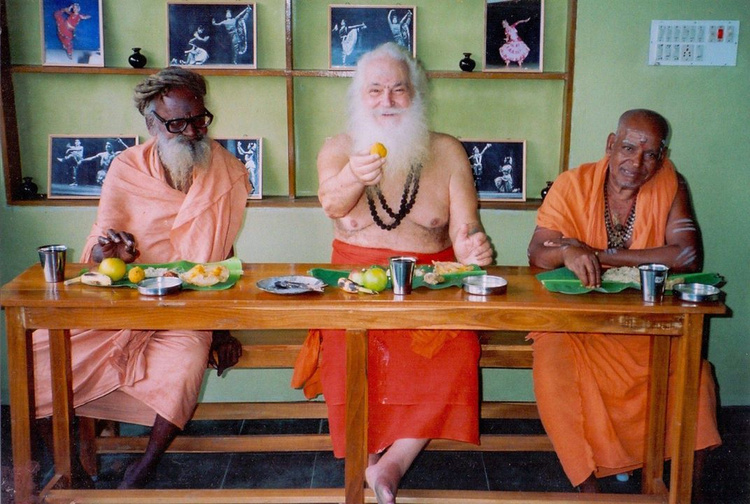
Not since ancient times has India experienced an explosion of spiritual
centers as at present times. Yoga Kendras, Yoga Alayams, Nilayams, Yoga Salaisand
ashrams are springing up on all sides. Not only in India, but in many outside
countries as well, Ashrams are being opened along with spiritual and non spiritual
communes, all supposedly dedicated to the "New Age" conciseness developing everywhere.
Many of the centers do not actually qualify as an Ashram in the strictest sense,
and are only buildings housing groups of people loosely drawn together, and supported
by some personal or group drive.
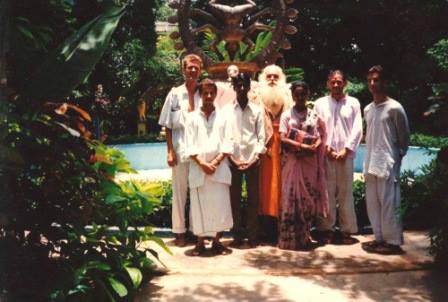
In
ancient India an Ashram was a hermitage, the home or abode of a Muni, a Sage,
a Yogi, or an eminent Rishi, and always the abode of a spiritual or religious
Guru who had drawn around him students to be trained in spiritual disciplines
of Yoga, Vedanta or the ancient holy sciences of Vedas. Loosely, the term "Ashram"
means the dwelling place of ascetics, a place where practice of Tapas, austerity
and penance, is observed. Yogis, Samkhyists, Vedantists and Tantrics who notably
established spiritual Ashrams were referred to as the "Ashramaguru" or " Ashramacharya."
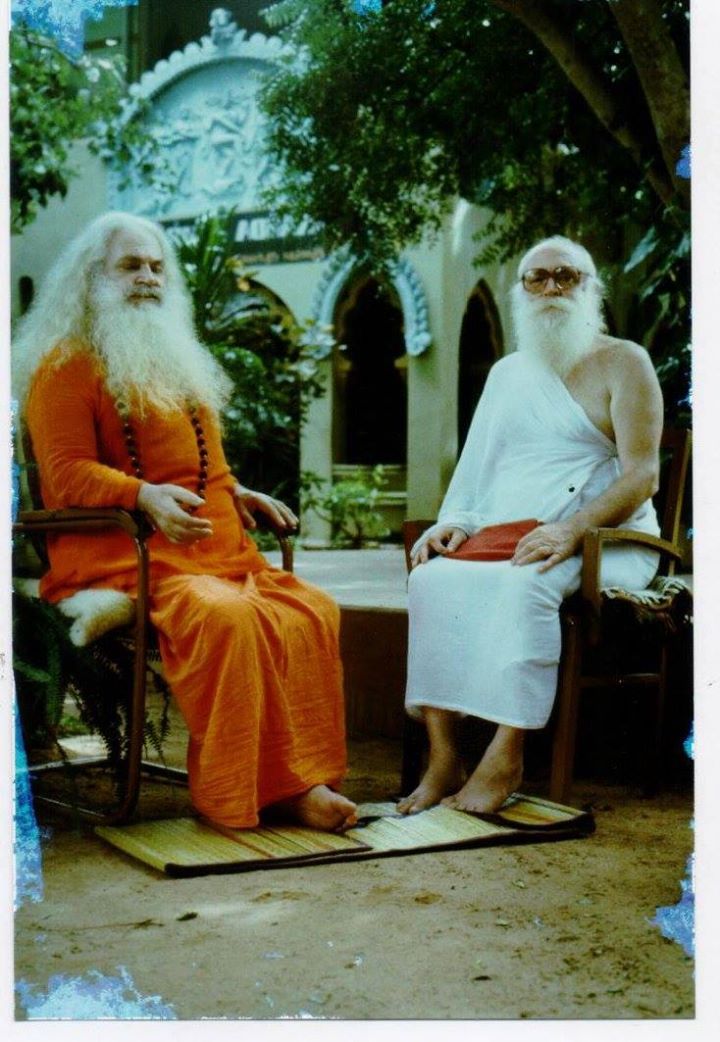
The
Ashram was usually in a remote area set in sylvan surroundings, usually near water.
A pond, a lake, a stream, a river, or a site near ocean side was usually selected.
Mountain retreats were established near acknowledged holy places. Some Ashrams
were on the plains while others were on the sea side. These spiritual retreats
were always the centers of spirited discussions on religious, philosophical, metaphysical
and para-physical matters. There was always a time set aside for meeting with
the Guru, the Guru Darshana, while Satsangha was the public group meeting where
students and visitors could enjoy the wisdom of the sage in residence! A Yoga
Ashram could also be known as a Rishi Gurukula, a Munivasa, Dharmmashaala. Punyaaalayan,
or a math. A Math or Monastery (Mutt) is also called a Madam or Madalayam in South
India. Some sort of Sadhana or "Truth Seeking" was to be done Yogaabhyasa, Yoga
discipline and practice was the usual prerequisite for those who entered an Ashram.
Some Ashrams were study centers, others, contemplative and meditative retreats.
Even in India today there are some outstanding Yoga and Vedanta Ashrams. Many
groups have taken to calling their centre of activity an Ashram, but do not deserve
that right to use such a title.
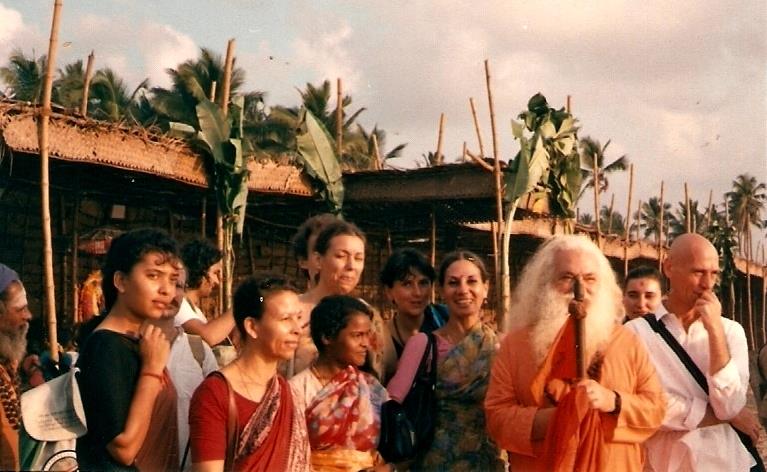
An Ashram should never be deeply immersed in worldly commerce
or preoccupied with business interests alone. Because of the degeneration of Ashrams,
real spiritual teachings have failed in what should be centers of spirituality.
There is little left in the teaching but those things which lead to Swapna Kriya
and Bhojana Kriya, sleeping and eating. An Ashram should never be a place where
people indulge in worldly habits. Some modern Ashram institutions proudly allow
any sort of diet, cigarette smoking, alcohol and the use of drugs. In many centers
Yoga is little more than worshipping at an empty tomb or reading the musty books
of some long dead Yogi. Such a place is better known by the name "Ashraya" meaning
refuge, a shelter, and an asylum, a resort or a place for common association .The
Sanskrit word offers us a play on the word "Ashraya", which also means a "fallacy".
Such places corrupt everything with which they come into contact, leading to degeneration
of religious and spiritual life and production of Ashrambhrashtha, or spiritual
apostates. The sincere member of spiritual community is called an Ashramika, or
Ashramin, and sees to it that the Ashram is a place where "a state of consciousness
prevails exuding evolution" as well as a place where the highest spiritual teachings
are made available for sincere seekers. In this sense the word "Ashram" has its
truest meaning as a spiritual state of mind".
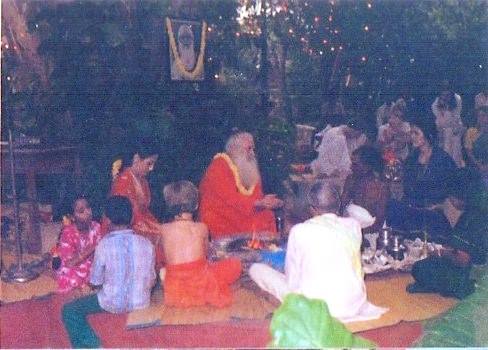
There
is another meaning given to the word "Ashram", where it suggests- the four stages
of phases of life. The first stage, Brahmacharaya, is the time when learning and
cultivative of skills predominate and one prepares for responsibilities of an
adult, mature life, literally student hood. The Grihasthya Ashram is the second
stage of life, that of householder and the family man. Responsibility to ones
mate and the children raised predominates, and one tries to be a responsible and
good citizen. The third stage Vaana prastha is retirement from the family business
and worldly activity.
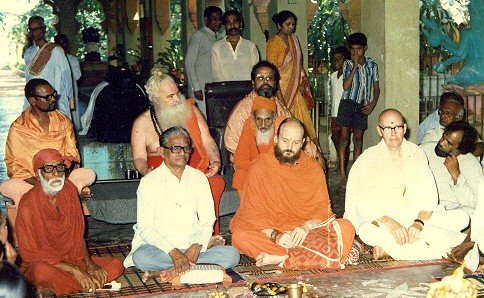
More
attention given to Inner Life development and ones intrinsic nature. Sanyaasa
is the renunciation of ego desires the worldly ambitions, this comes usually through
the development of Higher Knowledge or wisdom which has grown out of direct experience
of life in the previous three states of Ashrams. In ancient times in India, each
of the first three periods was to last approximately twenty-one years, although
Sannnyasa could be taken at any time without entering into the Grihasthya or Gharhasthya
state. In modern Yantra, the period of time for each of the four Ashrams has been
extended to some twenty seven years of life in each phase. Each one is literally,
then, living in their own "Ashram". The body is described as the "temple of living
spirit" or an "Ashram in which Yoga Sadhana or Yoga Abhyasa can be done". This
is the best meaning of Ashram".
In ancient India a spiritual aspirant sought
out either a religious teacher or a Swamiji. The teacher was often a highly qualified
Pandit one who was versed in the ancient " Wisdom Lore'' of Vedas. Sometimes a
spiritual aspirant would seek out a yogi or one qualified by direct experience
in the inner Aspects of "Spiritual Evolution". He may meet a wandering mendicant
or find a teacher in temporary residence at a famous shrine, temple, or other
holy place, but more often, the seeker would go to home of Rishi, to the place
where the teacher imparted instruction. This was called a "Gurukula" which literally
means the "Womb of the Guru".
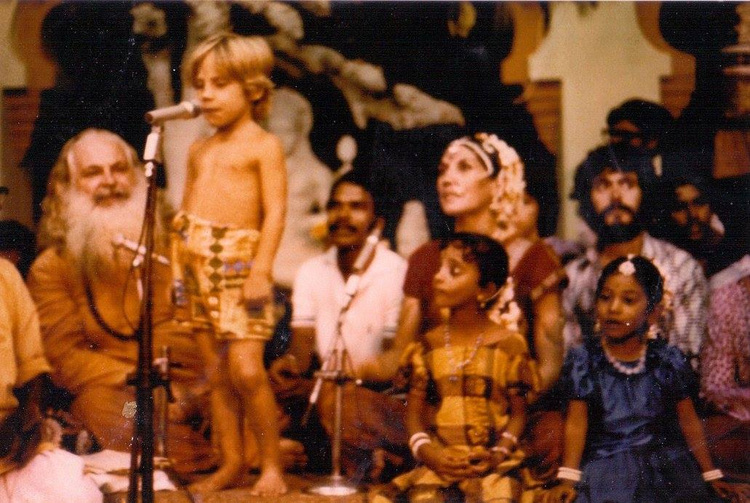
As
a child is matured in its mother's womb and made ready for the world, so also
the spiritual "babe" is nurtured in the "Womb of the Guru " and made ready for
life in world. It is often quoted that the Guru is " Mother, Father, God". Students
who seeks life long relationship with a realized teacher must begin as "spiritual
babes" for many life times until they evolve through the teachings, the love and
grace of Guru. In the beginning, we are only Shishyas, or students and the teacher,
the Shishyaka. With sincere development, the teacher may accept as a Chela, a
bonafide disciple. On realization, the student is one with his Guru. He himself
becomes a Guru! Gurus all! While I was planning the establishment of Ananda Ashram,
Pondicherry, I was cautioned by the editor of a well known English newspaper about
the problems I would place. He asked, "why are you building another Ashram in
Pondicherry ? " Without waiting for an answer, he told me: "We've already been
"taken in" by so many spiritual institutions, including the big Ashram. We have
been smothered for years and many have actually suffered because of the presence
of an Ashram in this territory. Even Hindu culture has suffered." I assured him
that I no aims to build a commercial centre and was not interested in promoting
division and separation from the community by passing oneself as an "elite, chosen
group of people".
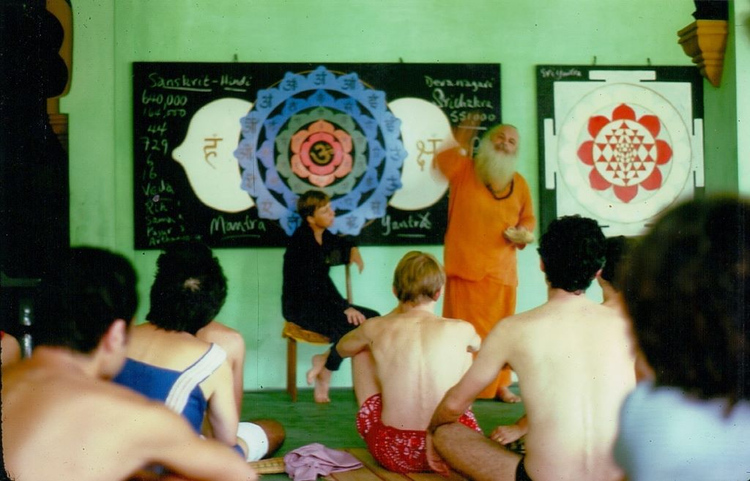
Rather,
I wanted to establish a model of the ancient Yogarishi Gurukula, where India's
greatest heritage would be taught. Yoga is a simple philosophy of Oneness. Division
and separation cannot exist in oneness. Harmful habits of tobacco, alcohol, drugs
and animal diet must be eradicated for a healthy community and higher moral and
ethical standards of conduct inculcated. Many will want their habits and their
lower state of life, but they should stay in the world and work out their Karmic
lessons. Otherwise, the Ashram "psyche" is lowered. When they are ready for that
Higher Life instructions, an Ashram like Ananda Ashram should be there to impart
it. …..
I sincerely feel that we have filled that vacuum in our local area,
in Yoga, Vedanta and Saiva Siddhanta.
Ammaji
comments: "At least that is our goal and we strive to attain it we reach for the
stars, ever though perhaps we reach only the tree tops. We are still human with
all the frailties and flaws honest in that level of evolution ! But ! We try to
live the Yoga Life and perhaps it is that "striving spirit" which sets us apart
from the sea, the masses of humanity who are still locked in their sub-conscious,
unconscious Samskaric stimulus response Life Style!"
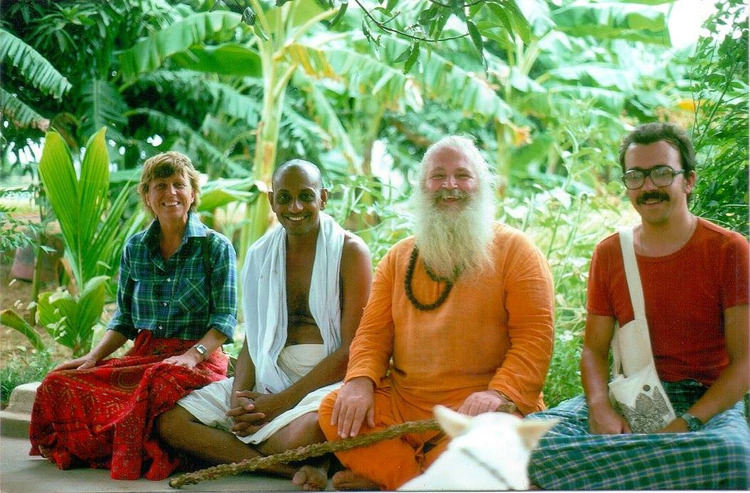
> Zurück zur Übersicht








